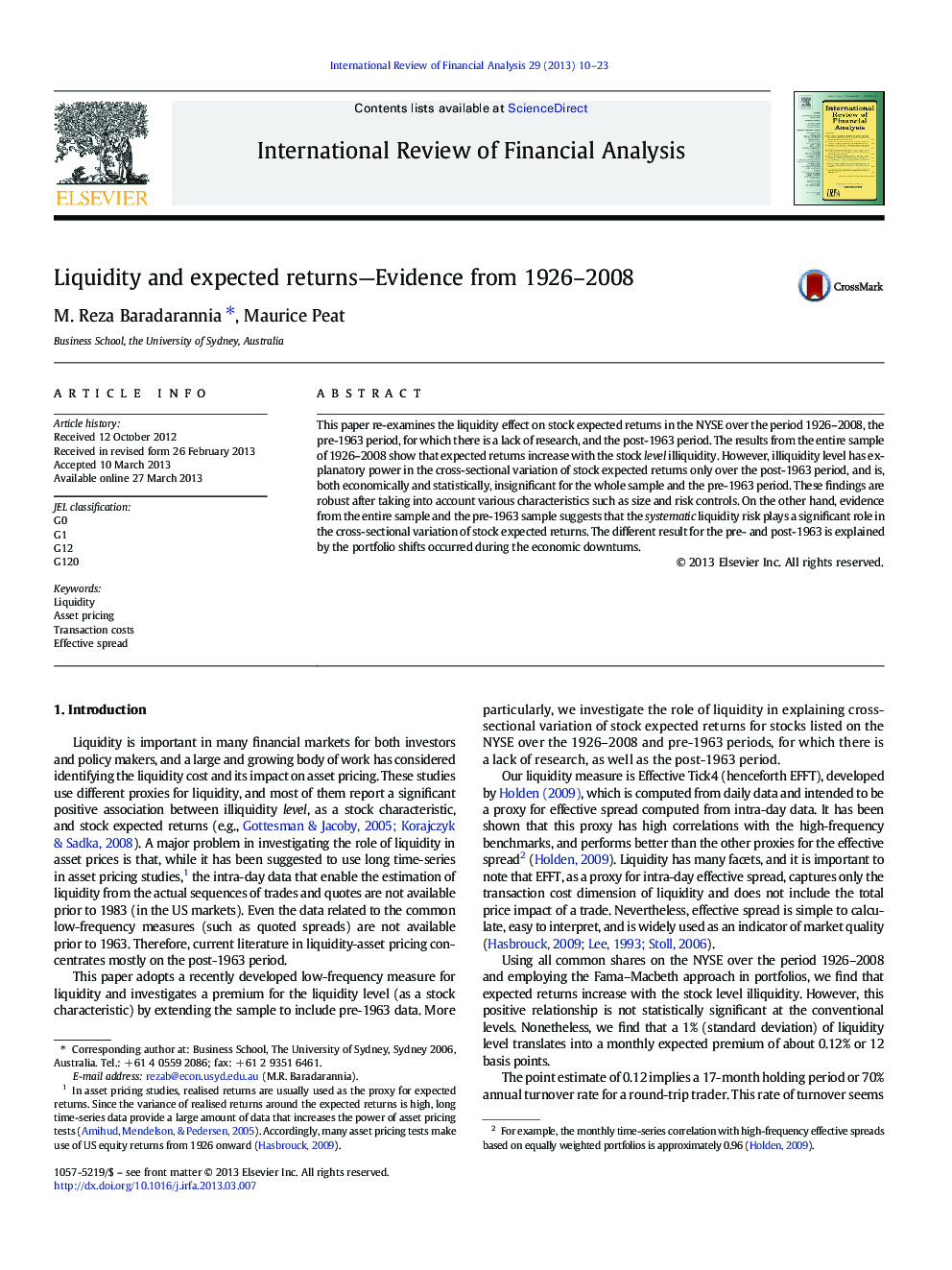| Article ID | Journal | Published Year | Pages | File Type |
|---|---|---|---|---|
| 5085027 | International Review of Financial Analysis | 2013 | 14 Pages |
Abstract
This paper re-examines the liquidity effect on stock expected returns in the NYSE over the period 1926-2008, the pre-1963 period, for which there is a lack of research, and the post-1963 period. The results from the entire sample of 1926-2008 show that expected returns increase with the stock level illiquidity. However, illiquidity level has explanatory power in the cross-sectional variation of stock expected returns only over the post-1963 period, and is, both economically and statistically, insignificant for the whole sample and the pre-1963 period. These findings are robust after taking into account various characteristics such as size and risk controls. On the other hand, evidence from the entire sample and the pre-1963 sample suggests that the systematic liquidity risk plays a significant role in the cross-sectional variation of stock expected returns. The different result for the pre- and post-1963 is explained by the portfolio shifts occurred during the economic downturns.
Related Topics
Social Sciences and Humanities
Economics, Econometrics and Finance
Economics and Econometrics
Authors
M. Reza Baradarannia, Maurice Peat,
